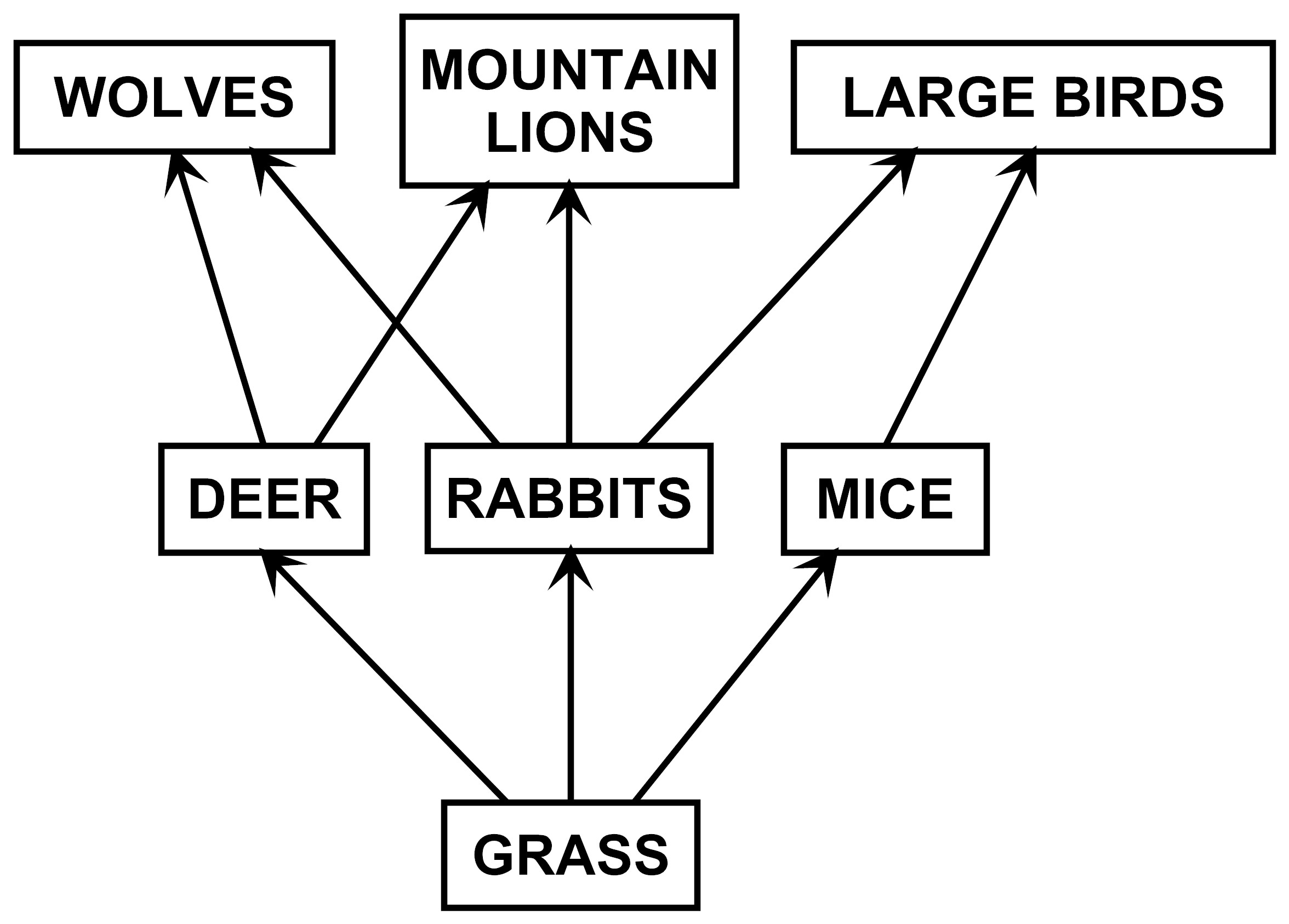Item IE045003: The size of a population of organisms (deer) can increase when its predators are removed from an area because the organisms can live longer and have more offspring that also live longer (includes a food web diagram).
When settlers arrived in parts of North America in the 1600s, feeding relationships similar to those shown in the diagram below would have been common. The arrows point from the organisms being eaten to the organisms that eat them.

Settlers killed many of the mountain lions and wolves because they thought that they were dangerous to their farm animals and families. A few years later, settlers noticed that there were a lot more deer. Using only the relationships between the plants and animals described above, what could explain why there were so many more deer?
- The number of deer increased because without predators, the deer lived longer and had more offspring that also lived longer.
- The number of deer increased because populations are always increasing.
- The number of deer increased because with fewer mountain lions and wolves, the deer had more food to eat.
- There is not enough information given in the question and diagram to tell why the deer population increased.
Answer Choice |
Overall |
Grades |
Gender |
Primary Language |
||||
|---|---|---|---|---|---|---|---|---|
| n = 1409 |
6–8 n = 756 |
9–12 n = 647 |
Male n = 672 |
Female n = 703 |
English n = 1204 |
Other n = 167 |
||
| A. | The number of deer increased because without predators, the deer lived longer and had more offspring that also lived longer. | 68% | 63% | 74% | 68% | 69% | 70% | 55% |
| B. | The number of deer increased because populations are always increasing. | 9% | 12% | 6% | 6% | 11% | 8% | 14% |
| C. | The number of deer increased because with fewer mountain lions and wolves, the deer had more food to eat. | 14% | 15% | 13% | 16% | 13% | 13% | 21% |
| D. | There is not enough information given in the question and diagram to tell why the deer population increased. | 9% | 10% | 7% | 10% | 7% | 8% | 10% |

